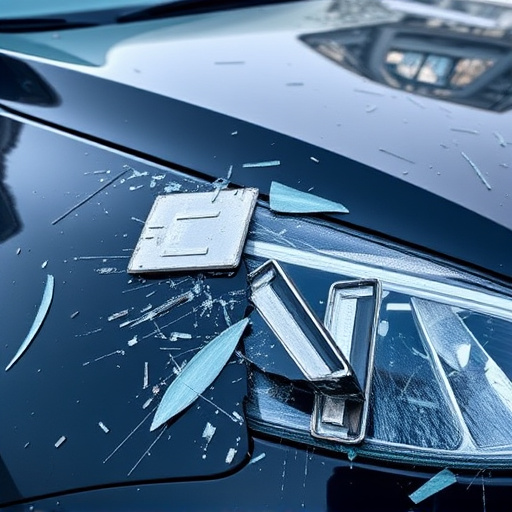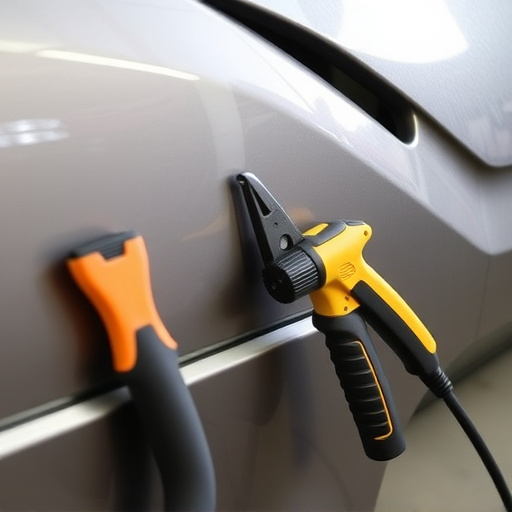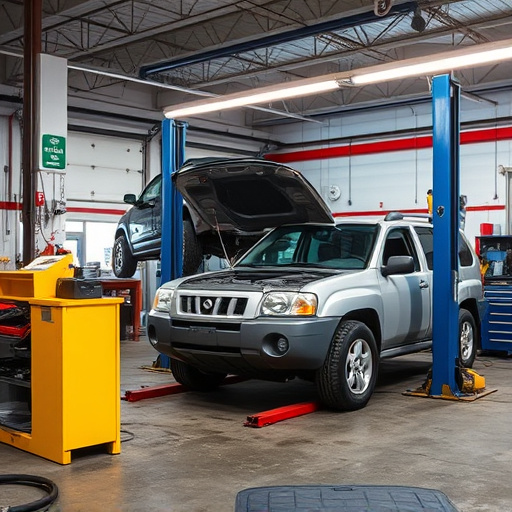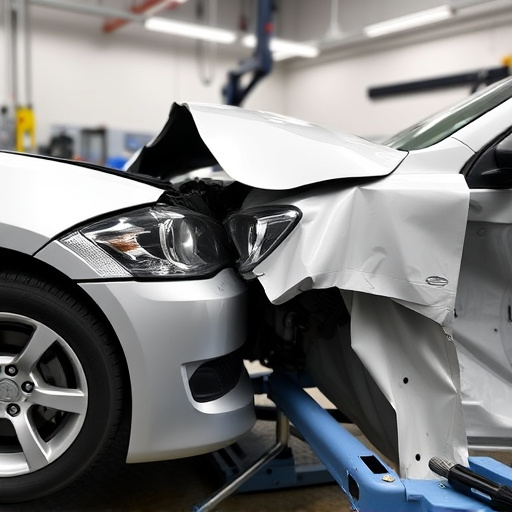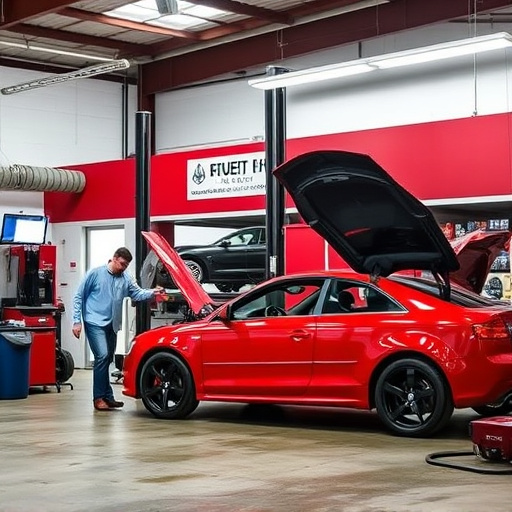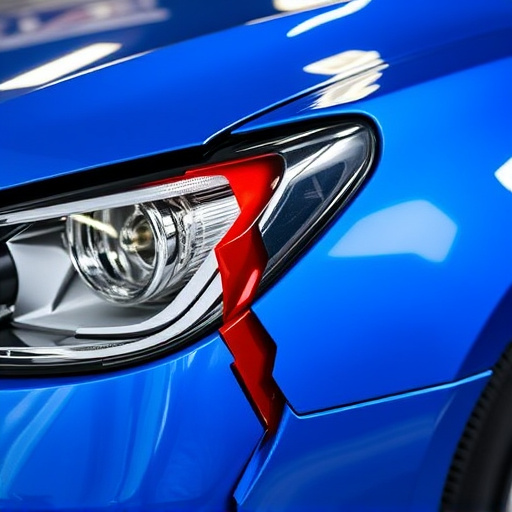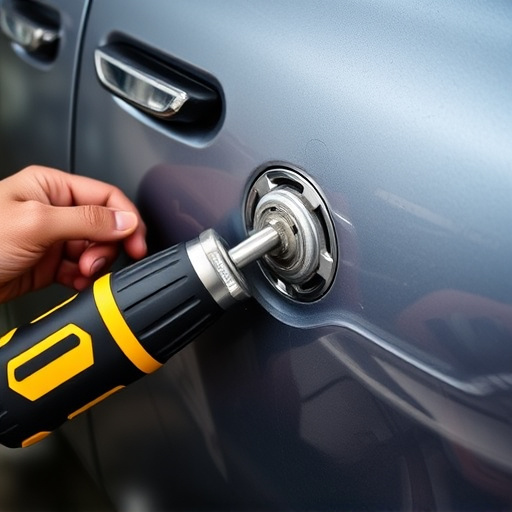Aluminum body components revolutionize automotive industry with superior strength-to-weight ratio and corrosion resistance, enabling lightweight collision repairs, faster restoration, and better fuel efficiency. Despite initial challenges in fabrication, their versatility and benefits drive widespread adoption, contributing to a more sustainable future in vehicle maintenance.
Aluminum body components are transforming the automotive industry, offering a lightweight alternative to traditional materials. This article explores the benefits and advantages of integrating aluminum in collision repairs, highlighting its role as a game-changer for efficient, cost-effective, and environmentally friendly vehicle restoration. We delve into understanding these components, their impact on the industry, and the challenges—and solutions—for successful implementation in light of growing demand for sustainable practices.
- Understanding Aluminum Body Components: Benefits and Advantages
- Lightweight Collision Repairs: A New Standard in Automotive Industry
- Implementation and Challenges: Adopting Aluminum for Efficient Repairs
Understanding Aluminum Body Components: Benefits and Advantages

Aluminum body components have emerged as a game-changer in the automotive industry, particularly for lightweight collision repairs. These components offer numerous benefits and advantages over traditional steel alternatives. One of the key advantages is their exceptional strength-to-weight ratio, making them highly effective in reducing vehicle weight without compromising structural integrity. This feature is especially valuable in modern vehicles where fuel efficiency and safety standards are stringent.
Additionally, aluminum body components provide excellent corrosion resistance, which is a significant advantage for both consumers and collision repair centers alike. In an auto collision center, using aluminum allows for faster and more efficient repairs as these materials can be easily welded, formed, and painted, ensuring that vehicles return to their pre-accident condition promptly. This versatility also makes aluminum body components a popular choice in vehicle collision repair, enabling auto collision centers to offer top-notch services while adhering to lightweight design trends.
Lightweight Collision Repairs: A New Standard in Automotive Industry

The automotive industry is witnessing a significant shift towards adopting lightweight collision repairs as the new standard, and aluminum body components are at the forefront of this revolution. This innovative approach to car restoration is not only transforming the way vehicle damage is assessed but also setting new benchmarks for efficiency and sustainability. By utilizing aluminum in place of traditional steel, repair shops can achieve remarkable results in terms of both strength and weight reduction.
Aluminum body components offer unparalleled advantages, particularly in the realm of fender repair and car body restoration. Its superior strength-to-weight ratio ensures that vehicles remain structurally sound while significantly reducing overall vehicle weight. This not only enhances fuel efficiency but also minimizes the environmental impact associated with heavier materials. Moreover, aluminum’s resistance to corrosion makes it an ideal choice for maintaining the longevity and aesthetic appeal of restored vehicles.
Implementation and Challenges: Adopting Aluminum for Efficient Repairs

The adoption of aluminum body components for lightweight collision repairs presents a promising path toward efficient and cost-effective auto body repairs. This shift is driven by the exceptional properties of aluminum, including its high strength-to-weight ratio, corrosion resistance, and ease of fabrication. These advantages make aluminum an ideal material for vehicle restoration and modern car dent repair techniques, enabling faster and more precise auto body repairs.
However, transitioning to aluminum body components comes with challenges. Traditional welding methods may not be suitable for all aluminum alloys, requiring specialized techniques like friction stir welding. Additionally, ensuring proper joint integrity and minimizing galvanic corrosion between aluminum and other materials used in the vehicle require careful consideration. Despite these hurdles, the automotive industry is increasingly embracing aluminum due to its potential to streamline production processes, reduce vehicle weight, and enhance overall fuel efficiency, contributing to a more sustainable future for auto body repairs and vehicle restoration.
Aluminum body components are revolutionizing lightweight collision repairs, offering significant benefits such as reduced weight, improved strength-to-weight ratio, and enhanced structural integrity. As the automotive industry shifts towards more efficient and sustainable practices, the adoption of these components is becoming a new standard. While challenges exist in implementation, including material costs and specialized training, the advantages of aluminum body components make them an essential part of the future of collision repair technology.

